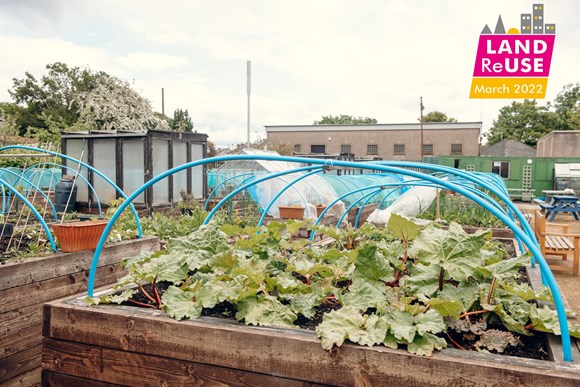New guidance for public bodies to ensure land is used and managed in public interest
Guidance for public bodies on how they can use and manage land productively and in the public interest as an integral part of a community wealth building approach is to be published at the Scottish Land Commission’s Land Reuse Month.

Minister for public finance, planning and community wealth, Tom Arthur MSP, launched the Community Wealth Building Guidance at the final session of the Land Reuse Month campaign yesterday.
The campaign is highlighting how the public sector can transform its approach to vacant and derelict land across Scotland, which totals more than 11,000 hectares – an area roughly twice the size of the city of Dundee.
Land Reuse Month has brought together civil servants, community regeneration specialists, land and planning experts, housing advisors, academics, and Scottish Government Ministers to share information and good practice and encourage action to tackle Scotland’s legacy of derelict land.
At the final session, Mr Arthur will launch the Scottish Land Commission’s guidance on how assets and resources can be placed in the hands of local people to enable community wealth building and to bolster local economies.
This guidance sets out actions that can be taken in the short and long term to support an inclusive, sustainable, and empowered local economy, where land is used and managed productively and in the public interest. The actions align with the principles for land ownership, use and management set out in the Scottish Government’s Land Rights and Responsibilities Statement, and provide information for public bodies that own, manage, use, and influence the use of land and buildings in Scotland.
Tom Arthur MSP said: “The Scottish Land Commission’s Community Wealth Building Guide will assist local authorities and their partners to better use their land and property to benefit communities the length and breadth of Scotland. This guide will advance the great work that is already underway and support the aims of our National Strategy for Economic Transformation to deliver economic prosperity for all Scotland’s people and places.
“I look forward to launching the guidance next week at the Community Wealth Building session of Land Reuse Month.”
Hamish Trench, chief executive of the Scottish Land Commission, added: “How we own, manage and use our land is key to building community wealth and strengthening local economies. The ways we own and use land influence many parts of our everyday lives – from the price and availability of housing, access to greenspace, the effects of derelict sites on our communities, our ability to take climate action, or simply the means and confidence for people to build businesses and communities.
“The public sector plays a key role in delivering a community wealth building approach by acting as anchor institutions. They have a substantial impact on local economies through their spending, investment, employment, and their use of land and buildings. Land Reuse Month has brought people from across the public sector and communities to think about how land can be used differently and in the interest of those communities.”
Land Reuse Month’s weekly virtual seminars have looked at tackling the legacy of derelict land and preventing further sites and buildings from falling into long-term disrepair. Delegates have learned of the opportunities in transforming derelict land, the benefits of collaborating with communities and other cross-sector organisations, tips to develop relevant strategies, and how to help stem the flow of abandoned and derelict land.
Participants have included the Scottish Futures Trust, Green Action Trust, Development Trusts Association Scotland, EDAS, and a wide selection of local authorities and NHS Trusts from across Scotland.
Hamish Trench added: “We recognise the many positive actions already being taken by public bodies and this guidance will support them in bringing greater focus on land and buildings in community wealth building.
“I encourage anyone interested to get involved in our final session of Land Reuse Month to share learning about how reusing vacant or derelict land can make a real impact in communities.”









